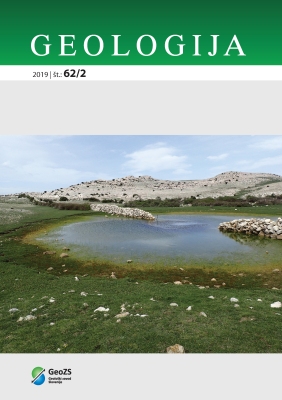Statistical analysis of groundwater drought on Dravsko-Ptujsko polje
DOI:
https://doi.org/10.5474/geologija.2019.012Abstract
Drought is a complex phenomenon and can be defined in many ways. It is a globally growing problem that occurs on a time scale ranging from months to years. There are several types of drought, but the least investigated is groundwater drought. Globally, research on it started relatively recently, in the last decade. In Slovenia, there are almost no data on groundwater drought. In this research, we focused on statistical analysis of groundwater level diagrams of individual groundwater stations, which can determine periods of groundwater drought. The first method used is based on ranking statistics defined by lower percentiles that indicate low groundwater level. Another approach was based on univariant Standardized Groundwater Index – SGI. As a case study, the unconfined Quaternary aquifer of Dravsko-Ptujsko polje was chosen. The results show that the groundwater deficits in the groundwater stations appear simultaneously but differ in intensity and duration of each drought period. The important conclusion is that the intensity of groundwater drought does not depend on the length of an event but more on thickness of the unsaturated aquifer zone. Also, groundwater stations located on the western rim below Pohorje Mountains have a higher amplitude of groundwater fluctuations than the others. The result of this are more intensive dry periods with longer duration. On the other hand, we have locations in the central and eastern part of the Dravsko-Ptujsko polje with more damped fluctuation, which leads to less intensive but more frequent groundwater drought events.Downloads
How to Cite
Adrinek, S., & Brenčič, M. (2019). Statistical analysis of groundwater drought on Dravsko-Ptujsko polje. Geologija, 62(2), 251–266. https://doi.org/10.5474/geologija.2019.012
Issue
Section
Articles

